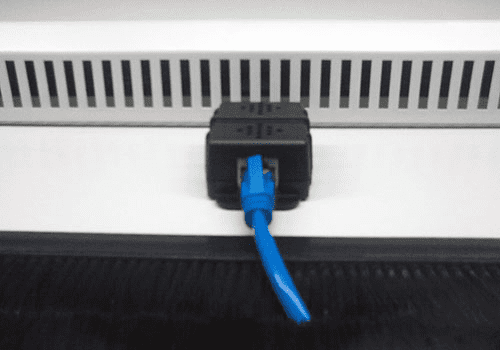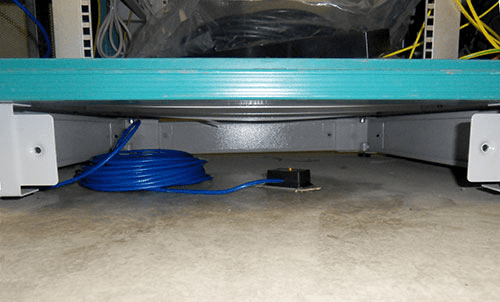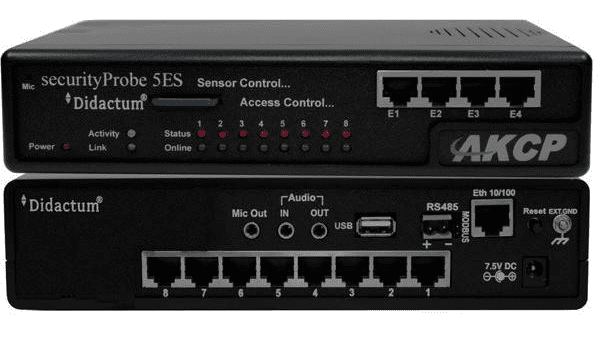IT server room and data center monitoring
It is a highly known fact that even in today’s modern world there are still many data centers and server rooms that are insufficiently monitored for faults and other problematic issues.
Failures of IT equipment can lead to costly downtime. By introducing a professional monitoring solution one can ensure that these faults and problems can be easily identified and permanent solutions can be applied before it is too late.
One problem is normally your existing mission-critical applications lack the ability to identify specific problems in a timely manner or fail to report before catastrophic failures occur.
The good news is that the appropriate IT monitoring systems required that are specifically designed to monitor and instantly report problems are readily available, easy to install and need not be an expensive investment. These are worth considering. In the long run preventing data center equipment failure is well worth the cost of the IT monitoring systems that are offered.
For example, the price of an AKCP sensorProbe4 enclosure monitoring system is in many cases only a fraction of the cost of ownership of a server enclosure included. Installed there is the cost of the server, storage and networking technology.

Rack monitoring
The continuous measurement of temperature and humidity on the network, the technology systems or server cabinets is of great importance. Although many modern blade servers do offer an automatic shutdown feature due to high temperatures, this emergency shutdown of servers does not eliminate the risk of component damage and miscalculations caused by temperatures in the cabinets being consistently too high referring to the equipment’s “MTBF.”
By using EMS or the Environmental Monitoring Systems offered is guaranteed to dramatically reduce these risks of catastrophic equipment or critical server failures.
Furthermore, having the ability to perform proper automatic shutdown of important servers and running the correct applications to perform this reduces downtime and improves business continuity.
To identify as quickly as possible the critical temperatures in wiring closets and server cabinets Didactum recommends the installation of at least 3 temperature sensors per server cabinet. The temperature sensors should ideally be on the floor in front of the cabinet, above before the cabinet and positioned at the top rear of the cabinet. The former is the temperature of the cooling air supplied to measure and monitor. The temperature of the air supply to the rack should be in the context of 16 ° to 24 ° Celsius. With the top front of the cabinet mounted temperature sensor, you can then see the effective cooling capacity monitoring of the air supply.
Mounted on the upper back of the network or server cabinet this sensor is used for monitoring the hottest part of a rack. At this point, it must be ensured that the cabinet temperature does not exceed the mark of 27 ° to 35 ° Celsius.
Other important sensors for monitoring cabinets
In each company's major server cabinets not only the temperature and humidity, but the air velocity (air flow) should also be measured and monitored. Inadequate air circulation can be evidence of a defective cooling fan and its cooling systems in the server enclosure. A high amount of dust can also have a negative effect on the efficiency of cooling and ventilation systems.
Therefore it is highly recommended to install the air flow sensors in these racks. These sensors may be mounted in the same positions as the temperature sensors in order to measure the important air flow within the server racks.
Additionally connecting and controlling auxiliary fans via the sensor controlled relay can also help effectively achieve substantial energy savings in the server room and data center.
The environmental factor relative humidity (RH) should also not be forgotten. The continuous presence of high humidity in the server room and data center can be directly related to corrosion damage to the IT hardware that is installed. Too low humidity of the air can also cause static build up and interference which can easily damage the sensitive server and network components in the server room and data center.
Therefore, the humidity (RH) should always remain at safe consistent levels, most importantly in mission-critical server racks. Any deviations of these safe levels need to be immediately alerted to the site administrators and technicians so they can take appropriate action.
The potential risk of fire in densely-built server racks should also not be underestimated. For example, a defective power supply or overheated boards can easily and quickly cause a fire. With the installation of smoke detectors in the closets, the generation of smoke that leads to the fires allows for early detection and providing appropriate time to take countermeasures preventing catastrophic situations.

Integrate climate technology in the IT monitoring solutions
Air condition units that are installed in the server room and data center’s main purpose is to maintain constant cool temperatures within the wiring closets and server rooms and are of an enormous importance in keeping the mission critical equipment from failing due to high temperatures.
In addition to monitoring the efficiency of the installed air conditioning units, a malfunction or failure needs to be detected and reported on as early as possible. If an air conditioner fails, this failure may initiate a second backup air-conditioning unit. However, this second air conditioner may then be unduly overburdened that could unfortunately result in a total failure of both units.
To ensure this catastrophic situation does not occur then appropriate temperature and air flow
sensors are strategically mounted directly next to the existing air conditioners to instantly detect disruptions, inefficient or total loss of air flow. If the air conditioning units are equipped with fault detectors then these sensor contacts should also be included into the IT monitoring systems alerting functions.
Maintenance and disruptions of the air conditioner can then be immediately addressed by the building equipment maintenance personnel, or can be forwarded to the climate engineer from the manufacturer. The recorded measurement data of the temperature, humidity and air velocity can then be included in to the IT security audits and for the energy optimization of air conditioning usage.
Unless your server room or data center includes a cold aisle containment system and is cooled in this manner, the temperature in the hot aisle can be significantly higher and can reach values in the hot aisle beyond the 30 ° C temperature mark, which is not uncommon. If there is a cooling failure due to the air conditioning, you will only have a very short time to rectify the situation that could have an impact on the overall environment.

Recognize water leakage in in time
In many server rooms and data centers false floors are available. Normally located under these floors are the server room and data center’s supporting cable channels, power distribution lines and also the cooling technology. A defect in a condensing pump, leakage of a water intake or even condensation build up on a cooling pipe can result in water leakage under this raised floor.
This water leakage can cause considerable damage in the server room and data center. For example a simple short circuit can jeopardize the availability of your entire IT infrastructure!
Therefore, below these raised floors, suitable water sensors need to be installed. The most convenient and effective type of sensor would be a rope type sensor that can be installed to monitor critical points such as below air conditioning and water-cooled server cabinets. These sensors will detect water leakage even from small traces of moisture. This will prevent possible water damage in the server room and data center by detecting and reporting these leaks as early as possible.
Not to be underestimated is also the risk from areas such as toilets, heating systems, social rooms and kitchens that can cause water damage. Severe weather or heavy rainfall can also cause flooding of entire IT infrastructures.
Another example has been caused directly by burglary and theft which lead to vandalism, so it is extremely important that the IT security concept must be integrated into the monitoring system.
We know of actual cases where a burglary occurred in the customer’s existing premises where by their water valves were deliberately opened in order to obliterate any possible traces of evidence causing catastrophic damage. Systems were then installed that prevented this from occurring in the future.
AKCP securityProbe 5ES
Compatible with all of the AKCess Pro range of Intelligent Sensors it provides a complete environmental, access control and security monitoring solution. The AKCP securityProbe 5E Standard has a Linux Operating System running an iMX25 CPU.
from 995,00 Euro*


